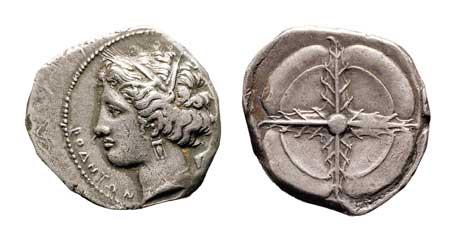Gods and Myths of Antiquity
Source - http://www.theartnewspaper.com/whatson/event/Gods-and-Myths-of-Antiquity/1122640
17 Feb 12 – 13 Mar 13

Rhodes drachma, third century BC
BARCELONA. While archaeological evidence confirms that religion was an important part of the daily life of the indigenous population of the Iberian peninsula well before the arrival of the Greeks and Romans, surprisingly little is known about native Hispanic deities.
Even details such as the names of native gods or their appearance and attributes remain topics of debate.
As part of a larger numismatic exhibition devoted to ancient religious practices, myths and cults in the region from the fifth century BC to the seventh century AD, the Museu Nacional d’Art de Catalunya will show how Iberian coins featured Greek, Oriental and Roman images to represent the local gods.
The show also examines the importance of plants and animals to the religious beliefs of the native population as illustrated through its coinage.
Around 150 coins are supplemented with artefacts such as votive offerings, vases, sculptures and amulets to offer an overview of the pagan and Christian practices of ancient Hispania.
“As coins are manufactured by the state, their iconography illustrates the values most prized by the rulers,” says Marta Campo, the show’s curator, adding that the frequent presence of deities on such coins suggests the importance placed upon religion.
The show opens with works that illustrate Greek and Eastern beliefs, and examines how foreign influences are incorporated into Iberian coinage.
Rituals associated with death, including the placing of a coin in the mouth of the deceased to pay for the journey into the afterlife, are explored.
The show concludes by showing how Christian symbols began to replace pagan ones from the fourth century, continuing under the Visigoths, who were a dominant force in the peninsula by the fifth century AD. n Emily Sharpe Categories: Archaeology & Ancient art